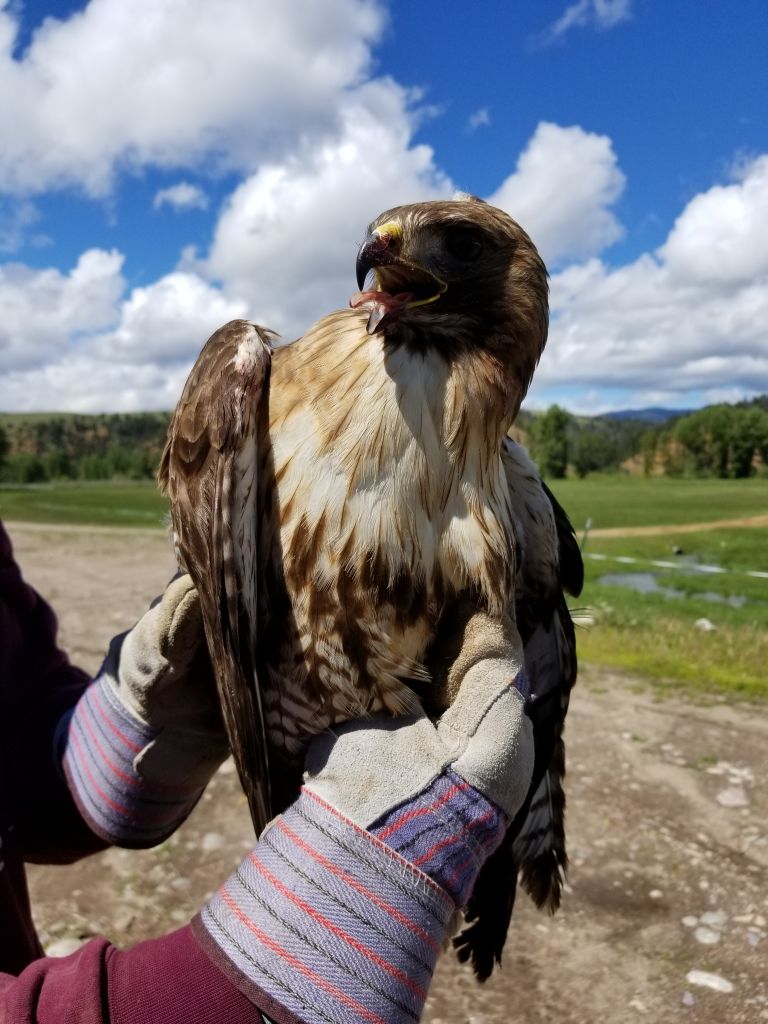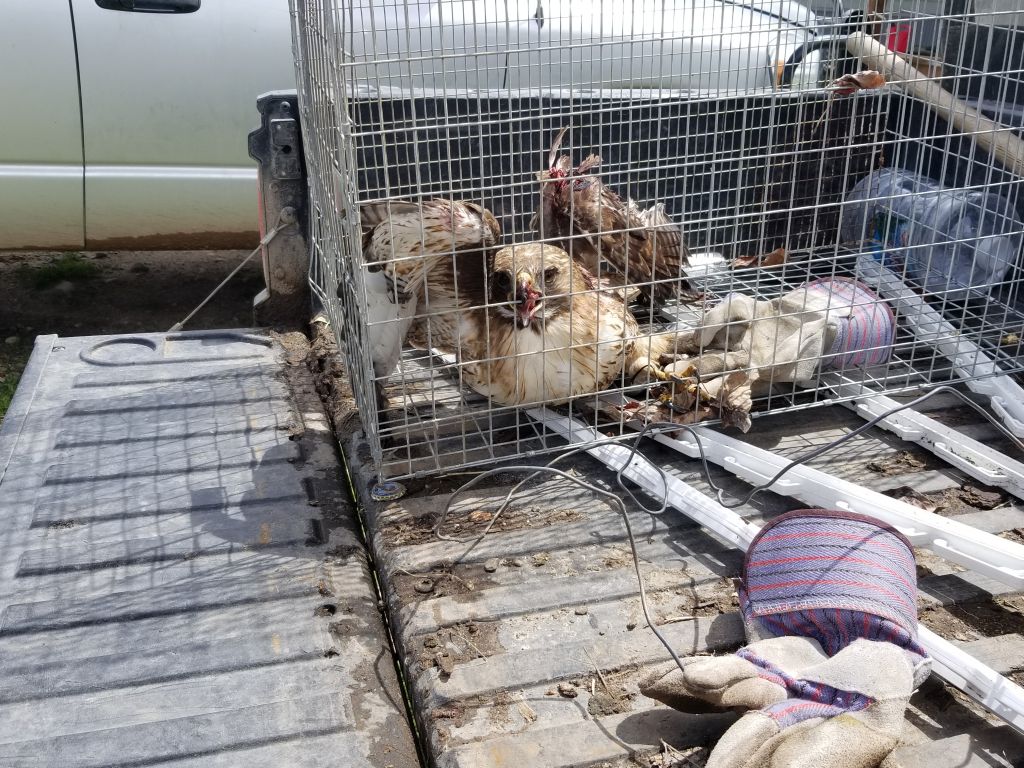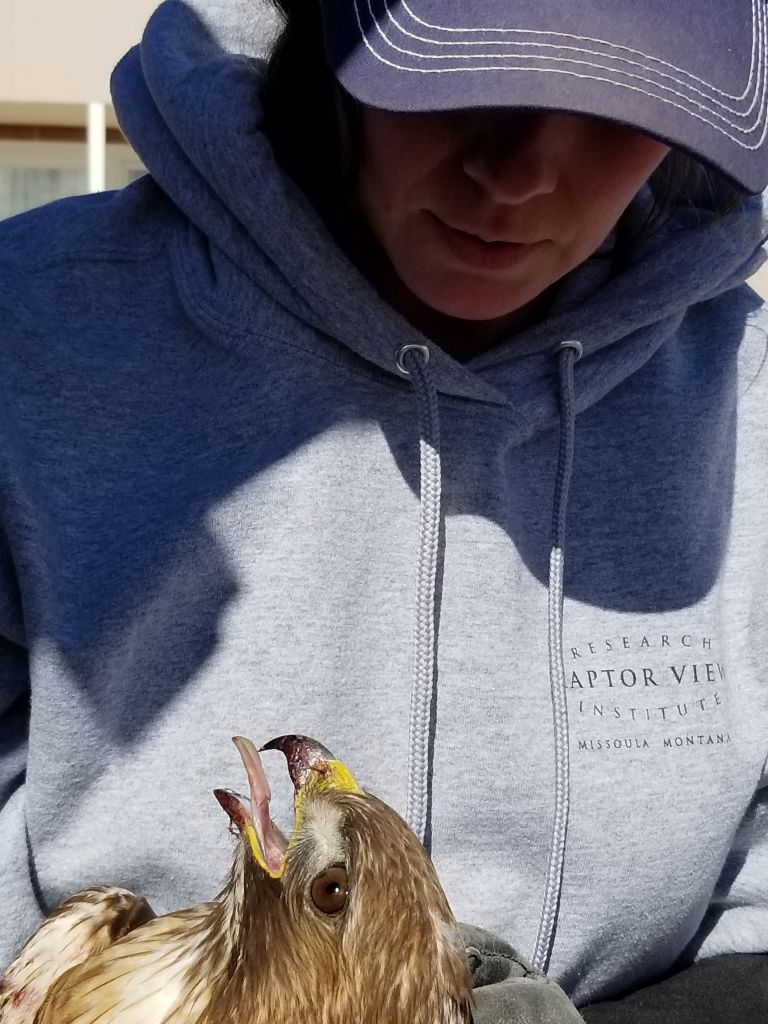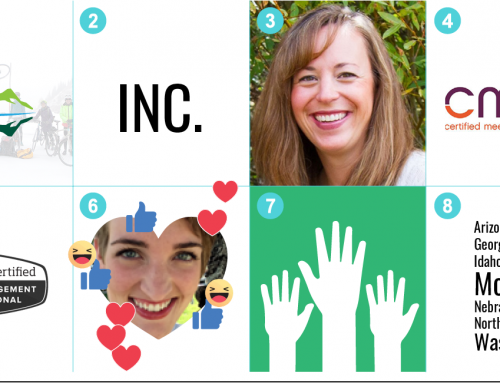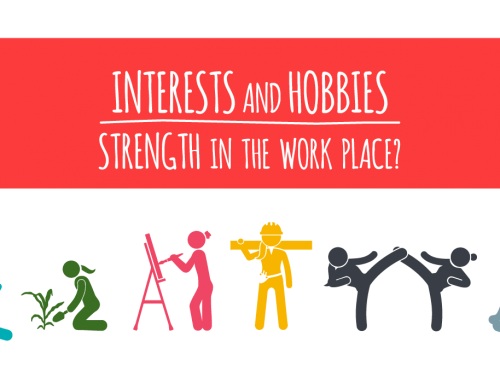I was in the middle of writing a very different blog when today happened and I had to save that one for another time so I could tell you about our amazing adventure today!
We live on a ranch outside of Philipsburg, Montana – a relatively rural area even for Montana. The scenery around our house is beautiful and we are very lucky to see all kinds of wildlife each day. Last night, my husband came in at dusk to get his shotgun. He had seen an injured Red-tailed Hawk run across the road near our house. It looked like its wing was badly broken and being raised in an old-school ranch family, it was my husband’s duty to put injured animals out of their misery so they didn’t have to suffer. As he was coming back downstairs from the gun safe, he remembered the story he had recently seen on the news about the baby owls (view here) that had been rescued by the Montana Raptor Conservation Center, a Bozeman, Montana, nonprofit organization that takes in injured or orphaned birds of prey. The mother of two owlets had been killed and the Raptor Conservation Center took in the babies while they looked for a new owl family to adopt them.
My husband wondered if the Montana Raptor Conservation Center might be interested in trying to save this hawk, so we did a quick web search for them and other similar organizations in the area. The Wild Skies Raptor Center based in Potomac, Montana, came up as another bird rescue organization that primarily focuses on raptors. We didn’t get ahold of anyone right away, so we left messages just in case. Red-tailed Hawks are pretty common around here, so we weren’t sure if it would be a priority for a rescue, but we decided it was worth a try. It was too dark at this point to go looking for the hawk, so we decided to wait for a call back and see if the hawk could make it through the night. There are a lot of other predators in the area and being grounded, we weren’t sure if it could hide well enough to stay safe.
Next Day…
On his first round of chores the next morning, my husband didn’t see the hawk and just assumed it hadn’t made it. Meanwhile, I got a call from the executive director, Brooke Tanner, of Wild Skies Raptor Center. She said she gets quite a few of these hawks with broken wings and was definitely interested in the one we found. She performs orthopedic surgery on bird wings and after the bird’s recovery, has successfully released many raptors back in to the wild! Now, all we had to do was find the hawk and catch it so she could come get it!
When my husband came back by the house, I let him know the rescue operation was a go and he just had to figure out a way to catch the bird. Should be easy, right? Except for their sharp, curved beak and razor sharp talons, plus the hawk was surprisingly fast running on the ground the last time it was seen! My husband is always up for a challenge, so he went to see if he could find the hawk. He located the bird just across the road, holed up in a cluster of trees. My husband went down to the barnyard to see what he could find for a net and cage. He came up with an old grain bag that he tied between two poles for a net to capture the bird and a rabbit cage that had been stashed away in the barn to use for the temporary home. With his leather fencing gloves on, he headed into the field across the road to see how easy it is to capture an injured bird of prey.
He found the hawk again and was able to walk up pretty close to it without it running away. As he got closer with the makeshift net stretched out in front of him, the hawk laid down on its back with its beak wide open and talons outstretched ready to protect itself with the only options it had left. Luckily, the hawk didn’t fight as the grain bag came down gently on top of it and my husband was able to reach under and carefully pick it up. Amazingly, the hawk went into the rabbit cage without a fight too!
When we got the hawk home, we could see that the bone at the top of its left wing was badly broken, but it looked like a recent break and it seemed to be in decent shape. We called Brooke and let her know that we were able to get the hawk into a cage. We asked if we should give it water or find a gopher for it to eat (there is always plenty of those around). She said a little water would be a good idea, but if birds are in a state of shock – it most likely was – giving them food could kill them. So we tabled the plans for a gopher hunt and just gave the hawk a bowl of water. We made arrangements to meet Brooke in Drummond later in the afternoon so she could pick up the hawk and take it back to her facility.
Of course the rabbit cage didn’t fit in the back of my car so the hubby had to go search for another option in the barn. He successfully found a dog crate to transfer the hawk to, but getting it out of the rabbit cage was not as easy as getting it in. As soon as the hubby’s leather-gloved hand got close to the hawk’s feet, it latched on and was not letting go! We managed to slowly tip the cage back so my husband could reach in with his other arm and gently pick up the hawk and lift it out of the cage. The hawk was relatively calm and we were able to take some pretty cool pictures before we put it in the new crate.
Drummond, here we come!
It is an hour drive from our ranch to Drummond. We took our three kids along so they could see how the bird would be taken care of. They had been very good about keeping their distance from the cage and moving slowly around it so they didn’t scare the bird, but keeping quiet in the car for an hour was a really tough challenge for them!
We met Brooke and a Raptor Center volunteer shortly after they had completed surgery on another bird in Missoula. They easily got the hawk out of the crate and checked out its wing. Brooke said it was a pretty bad break but there might be enough bone left to fit a pin into and be able to get it flying again. She confirmed the hawk is a male (females are much bigger) and although skinny, not in too bad of shape.
Surprised at the ease of handling the hawk, Brooke educated us a little bit about Red-tailed Hawks. They are usually the easiest and the calmest of the raptors to handle. They can still inflict quite a bit of damage if they want to. He is most likely part of a nesting pair (my husband confirmed that he has seen a pair flying around and thinks he knows where the nest is). At this point, the babies are about half-grown, so the momma should be able to take care of them on her own. Momma Red-tailed Hawks generally stay with the babies in the nest for the first month or so and the dads bring food back to the nest to feed everyone. With older babies now, the momma should be able to go hunting and leave the babies alone in the nest until they are big enough to go hunting with her.
Brooke’s partner asked us if we live on a dirt road – yes. Is the speed limit 35-40 miles per hour? Yes. Lots of traffic in the summer? Yes (for our neck of the woods anyway). Did we find the bird just off the road? Yes. Apparently, it is very common for raptors to get hit by cars in these kinds of conditions. I never thought a bird this large would get hit by a car, but they do hunt along roadways and may not get out of the way in time.
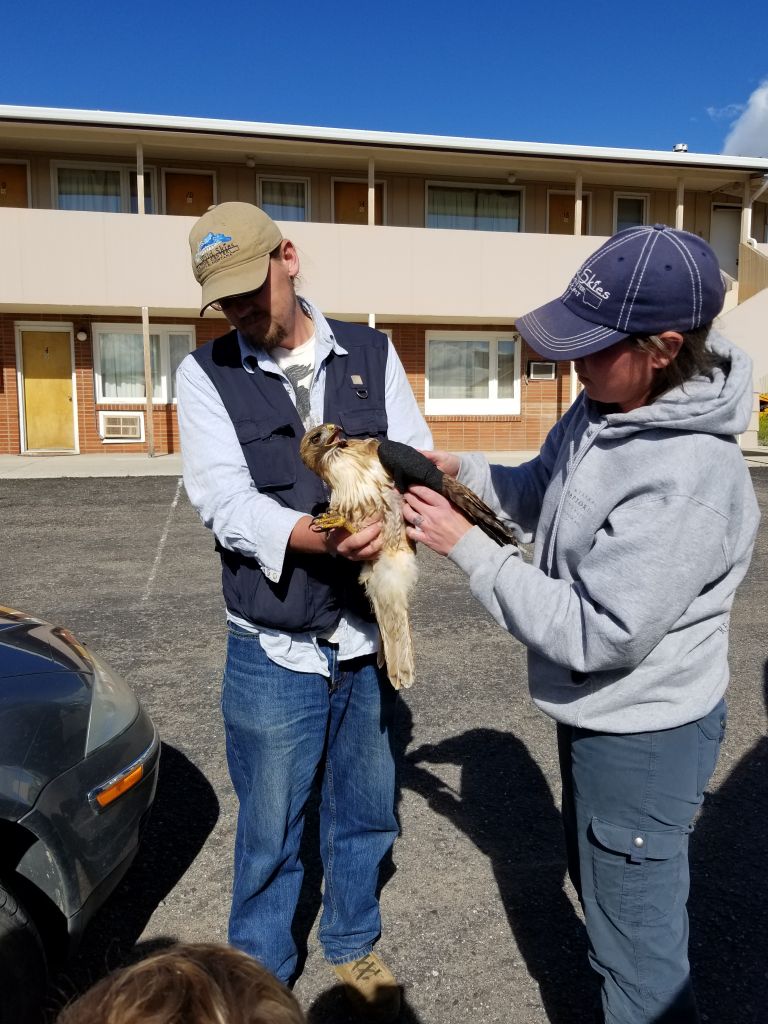
As Brooke was talking, she put gauze around the broken bone and gently wrapped up the wing to stabilize it and make it a little bit less painful for his next car ride. She is going to take x-rays when they get to the Raptor Center to determine if surgery is a possibility. If it is, she will get his wing back in working order, give him time to recover, and then bring him back to the ranch to be reunited with his family.
Wild Skies Raptor Center is a non-profit organization whose mission is to “provide the best possible care, rehabilitation, and eventual release of injured wild birds, focusing our efforts primarily on raptors. We believe it is our moral obligation to protect and conserve our wildlife and natural resources for future generations through rehabilitation, education, and outreach programs.” They provide educational programs with live raptors that were injured and are not able to return to the wild. You can see these birds on their Ambassadors’ page here.
If you are interested in learning more about Wild Skies, you can read about them at www.wildskies.org or call them at 406-210-3468. If you would like to support their organization, you can do so through AmazonSmile donations or donate directly on their website.
And if you are wondering about the baby owls that started us on this crazy adventure, they have been released back into the wild with a new owl family! Check out the story here.
About the author:
Genevieve Kulaski grew-up in Missoula as a true Montana kid, camping all summer and skiing all winter. Wanting to see the world, she took off after high school. She started out exploring Colorado while attending CU Boulder, studied abroad in Russia, and then continued her travels while serving in the Air Force after college graduation. She landed in Washington D.C., but only for a short while, because she met her Montana cowboy who convinced her to move back home. There is truly no place like home! They spent a few years in Bozeman where Genevieve worked as a destination management specialist helping groups explore the beauty and unique experiences the Greater Yellowstone Area has to offer. They are now raising their three kids on the family ranch outside of Philipsburg and Genevieve continues to explore the state for those can’t-miss experiences. Genevieve loves sharing her home state with visitors and putting together one-of-a-kind Montana events that leave everyone with memories to last a lifetime.


